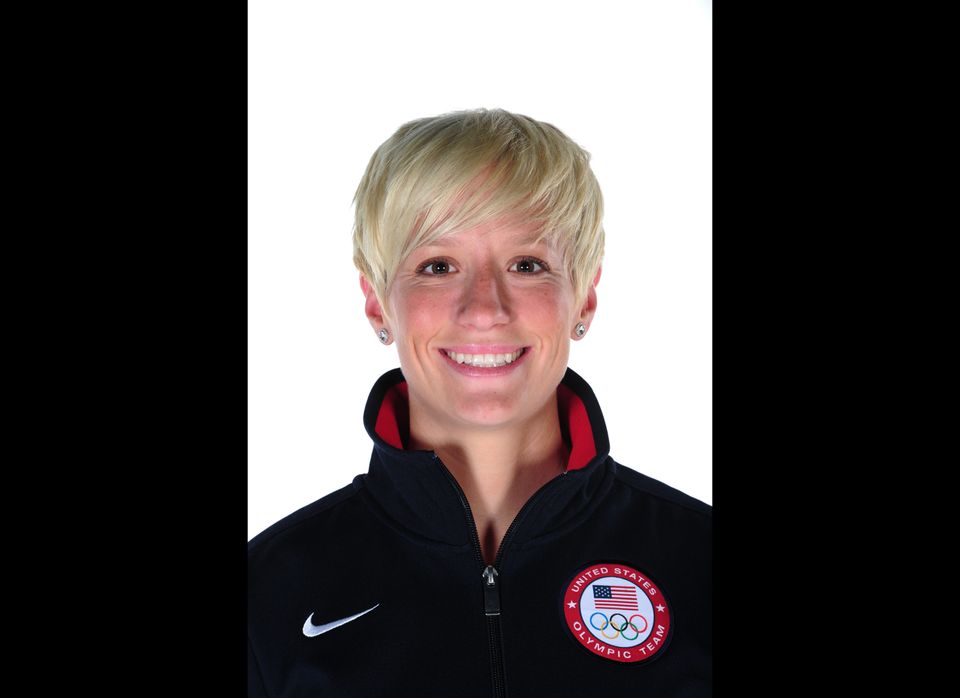
By Dan Pompei, National Football Post
Youngsters aren’t the only ones who look up to big receivers like 6-5 Calvin Johnson and 6-4 A.J. Green. So do NFL cornerbacks.
Out of the 169 cornerbacks who were on NFL rosters as of last Tuesday, only 53 of them were 6-0 or taller.
It’s not because NFL teams don’t want tall cornerbacks. They do. They just can’t get them.
“Those six foot corners are hard to find,” one AFC personnel director said. “Other than quarterback, cornerback has become one of the most important positions on the field, and everybody wants them, especially the tall ones.”
Everybody wants them because so many receivers have to duck when they go through doorways. There were 106 receivers on NFL rosters last week who were 6-0 or taller, or exactly twice the number of 6-0 corners.
Some teams emphasize height at the cornerback position more than others. The Steelers, for instance, are tall cornerback hogs with four corners who are six footers, and their fifth, Curtis Brown, is a shade under six foot tall. Other teams with multiple tall corners include the Seahawks, Jaguars, Eagles, Packers, Bills, Giants, Rams, Ravens, Bengals and Panthers.
When Nick Saban was coaching the Dolphins, he wasn’t interested in a cornerback who wasn’t at least 5-11.
Patrick Peterson has height, reach and ball skills--which is why he is the ideal cornerback.
An NFC personnel man pointed out that if a corner is tall and has speed, change of direction skills, willingness to tackle and ball skills, he is a top 10 pick—like Patrick Peterson of the Cardinals. But there aren’t many like him.
“We’ve been trying, but how many come out every year?” Seahawks general manager John Schneider said. “Guys who can really drive, there’s maybe three or four. There are a lot of taller guys who can’t break on the ball that well.”
So teams look for different ways to acquire tall corners. Schneider found Pro Bowler Brandon Browner in the Canadian League. The Eagles tried a varied approach, drafting Curtis Marsh, trading for Domique Rodgers-Cromartie and signing Nnamdi Asomugha as a UFA. The Jaguars drafted Rashean Mathis and Derek Cox from schools that were off the beaten path, Bethune-Cookman and William & Mary.
Every team prefers height at the position. But it’s not as necessary for some, depending on the techniques they ask their cornerbacks to play. Teams that press a lot need bigger corners. Zone teams can get away with having quicker, smaller cornerbacks as long as they are tough and can play the ball in the air.
Some teams prefer a combination of taller and shorter corners so they can use different coverages and match up with different types of receivers. For all the benefits of taller cornerbacks, the large majority of them can’t mirror, change directions and burst like shorter ones.
“You can’t expect a corner who is over 6-0 to move like a 5-8, 5-9 guy,” Jaguars general manager Gene Smith said. “They aren’t going to have the same fast twitch, so there is some give and take. We are looking for bigger corners, but we don’t want to compromise speed in doing so. Sometimes the bigger corners aren’t as fast and are tighter in the hips.”
It is no coincidence that four of the five corners who had the most defensive holding penalties in 2011 were tall ones: Stanford Routt (6-1) had eight, Antonio Cromartie (6-2) had five, Browner (6-3) had four and Ike Taylor (6-1) had four. The only cornerback with at least four holdings who is not 6-0 is Orlando Scandrick, at 5-10.
Many teams are willing to live with a tall cornerback’s deficiencies because they can neutralize wide receivers. “They force the quarterback to be more accurate because they cover up some of the receivers,” Smith said. “There are some big receivers out there, but in general there is less surface for the quarterback to throw at with a big corner. Bigger players present a bigger obstacle to throw around.”
This is particularly beneficial in the red zone. “Shorter corners tend to play fairly well between the 20s, but when you get in the red area, the bigger corners can be more of an asset with jump balls and things of that nature,” Smith said.
One front office man said his team is fine with 5-10 corners as long as the player has long arms. Having long arms enable a cornerback to play taller than he is. “They can reach for balls downfield, reach for balls coming back and compete better for contested balls,” Schneider said.
Long arms help a corner in press coverage too. It’s difficult for a short-armed corner to get a good jam and then turn and run because he has to get too close to the receiver.
A cornerback with 32 inch arms is ideal. Trumaine Johnson is 6-1 ½ and has arms that measured 33.6 inches. That explains why the Rams made him a second round pick in April. He could develop into an ideal matchup corner against big receivers.
If he does, Johnson will give the Rams what every team is looking for.
*In August Joe Flacco turned down a big offer from the Ravens and his contract will expire after the season, but that does not mean he will be a former Raven anytime soon. Barring an unexpected flameout from Flacco on the field this year, everyone familiar with his situation expects him to remain a Raven. Agreeing to a new deal remains an option, as does the franchise tag. Flacco is not the type of athlete to get agitated about the contract talks, so there is little consternation about the situation. The Ravens do not have a history of negotiating with players in-season, but they could make an exception for Flacco if Flacco indicates an interest to do a deal.
*Kellen Winslow can give the Patriots some of the things Aaron Hernandez gives them, but not all of the things. Front office men who have evaluated Winslow recently say he has lost some speed and can’t get downfield the way he used to, or the way Hernandez can. But Winslow still has the ability to separate in a short area, as Hernandez does. If his knee holds up, Winslow can give Bill Belichick another chess piece.
The strongest armed passers are not always the best passers. You will notice some of the league’s best quarterbacks, including Tom Brady, Drew Brees and Eli Manning, don’t make the cut on this list. But there is something to be said for pure arm strength. Here, with a little help from some front office men, are my Sunday best arms.
1. Jay Cutler, Bears. His throwing motion is inconsistent, but he can put some real mustard on the ball almost any way he gets rid of it. Jets coach Rex Ryan is on record saying he thinks Cutler has the leagues strongest arm. CBS analyst Dan Dierdorf said during a broadcast that Mike Shanahan told him Cutler’s arm was stronger than John Elway’s.
2. Joe Flacco, Ravens. He throws the best comeback in the league. The beauty of Flacco’s arm is that he has perfect mechanics and is an easy thrower. There is no strain in his passes. Interesting point: he has a much stronger arm than Matt Ryan, who was chosen 15 spots ahead of him in the 2008 draft.
3. Matthew Stafford, Lions. He can be late getting off a throw and still be fine because he puts so much velocity on it. The dropoff begins after Stafford.
4. Cam Newton, Panthers. He might win a throwing contest for who can get the ball to land farthest. Drawback: he has a long release.
5. Ben Roethlisberger, Steelers. He can throw hard even when he’s on the move. Roethlisberger is a big, strong man who can put his body into his passes.
6. Jake Locker, Titans. He can drive it on short to intermediate passes, and he can go deep with a tight spiral.
7. Tarvaris Jackson, Bills. If he had as much accuracy as he does arm strength, he would not be on his third team in two years.
8. Aaron Rodgers, Packers. He was not regarded as an exceptionally strong-armed QB coming out of Cal, but he has improved his arm strength in the NFL. He has a whipping throwing motion, but he makes all throws. Rodgers’ quick release helps.
9. Josh Freeman, Bucs. He has a cannon but he also throws a catchable ball.
10. Michael Vick, Eagles. He isn’t the biggest quarterback, but he throws big, and he throws effortlessly.
Head Games is a documentary you don’t want to see but should see. It’s important and it makes you think. And being able to think is not something anyone who has played football should take for granted.
The film examines the concussion crisis that has gripped football as well as other sports such as hockey, soccer and lacrosse. It was inspired by the book with the same name written by former Harvard defensive tackle and WWE wrestler Chris Nowinski, who is featured prominently in the movie.
Nowinski is a crusader who is helping to make sports safer after 12 months of post concussion syndrome ended his wrestling career. And sports are becoming safer. That’s the good news. The bad news is there are generations of athletes who are going to have life-altering, if not life-ending consequences from head injuries that went undiagnosed and untreated.
Some of the most moving segments of the film center on former NFL players Isaiah Kacyvenski and Gene Atkins. Kacyvenski, who suffered two concussions three weeks apart when he played for the Rams, recalls being allowed back in a game 20 minutes after not knowing where he was. Then he suffered another head injury, and was taken off the field on a stretcher.
Atkins, the former Saint and Dolphin, has suffered cognitive damage and was filmed struggling to state the months of the year. He has attempted suicide multiple times.
All of this can be alarming to a parent of a son playing football. Which, coincidentally, is what I am. “Personally if I had a six year old playing football, I would be freaked out, because you are playing Russian roulette with their future,” Nowinski says in the film.
My hope is that a film like this and the discussion and concern it creates will help reduce head injuries in the future.
*When Steve Sabol left us, the NFL lost what may have been its greatest ambassador. Thanks, Steve, for memories that will last forever.
*In terms of how the Bucs are attacking kneel downs, it’s not just opponents who have to be concerned about injuries—it’s Bucs defensive linemen.
*I have no problem with Jeff Ireland telling off an obnoxious fan. Being employed by an NFL team does not mean you should have to accept whatever kind of verbal abuse someone can dream up and have no recourse but to take it.
*Not only is RGIII not in the Big 12 anymore, but neither, apparently, are the Rams, Seahawks, Cardinals and 49ers.
*Wonder if Randy Moss will find a little surprise in the 49ers’ postgame spread at the Metrodome.
*If you are a fan of an 0-2 team, cheer up. It’s not so bad being 0-2 when you are two games behind only six teams in the entire league. It’s a 1-1 world.
Dan Pompei covers pro football for the Chicago Tribune at chicagotribune.com.
